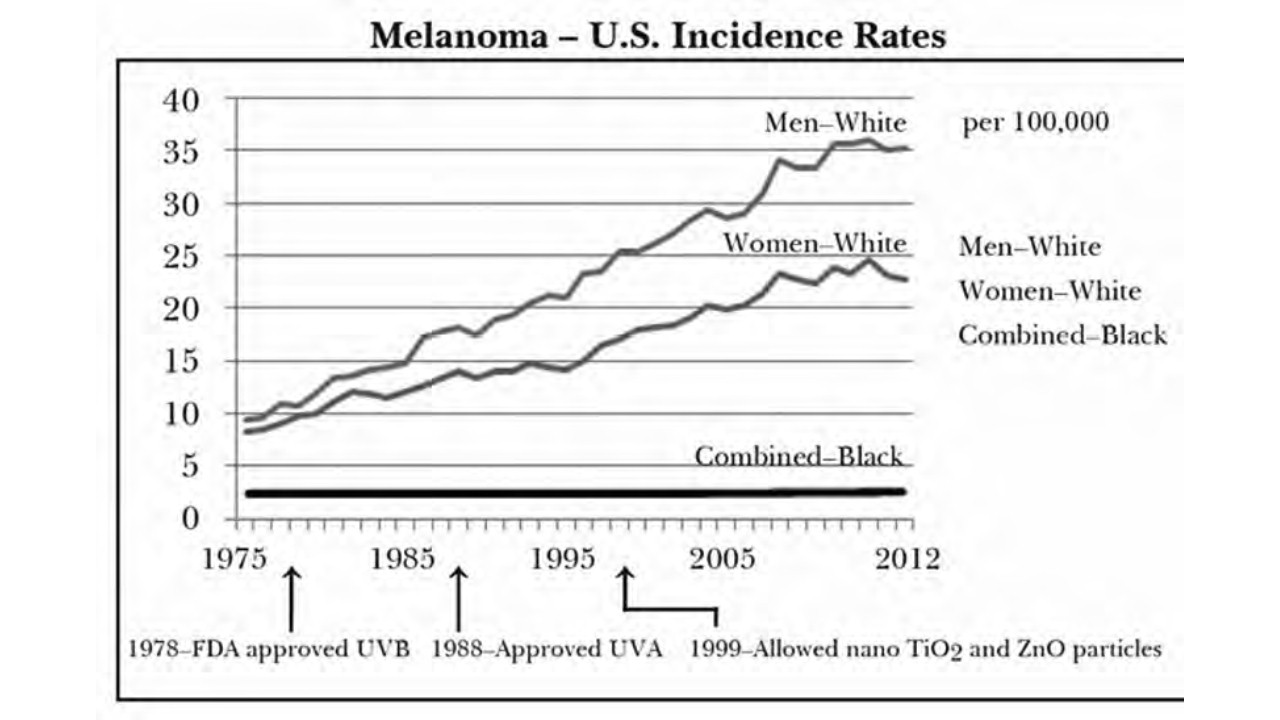Let’s talk sunscreen. Love it or hate it, we’ve all used it to “protect” our skin from sun damage since it hit the shelves in the 70’s. We fortify our skin with sun protecting agents the way that we fortify breakfast cereals, milk and other food products that have been stripped of their natural nutrients. With the increase of mass farming and processed foods and the decrease in soil health, our foods have become less nourishing and antioxidant concentrations have significantly decreased compared to previous generations. As a result, our bodies are losing their ability to protect themselves from the inside out.
How does my body protect my skin from sun damage?
The human body naturally produce melanin, the pigment in skin, hair and the iris of your eye that is responsible for dissipating UV radiation. Your body’s melanin is your best protection against the sun. Once your skin begins to turn red and burn, your body is telling you that it has run out of natural resources to protect itself from the intensity of the sun. Instead of covering up or getting out of the sun, this is when we typically slather up and protect our skin with a layer of goopy chemicals AKA sunscreen... right?
Not so much.
Not only are many of the chemicals in sunscreen toxins to humans and the environment, but most sunscreens are not even providing us with the protection that we need.
Let’s dig in.
Dr. Elizabeth Plourde CLS, PhD, is a medical researcher who has dedicated her career to researching the harmful effects of sunscreen on both humans and the environment. According to the research of Dr. Plourde, ever since sunscreen ingredients were approved by the FDA and became commonplace in the American household 40-50 years ago, melanoma rates began to skyrocket.

One reason for this boils down to the layer of the skin sunscreen actually protects. Many sunscreens only protect skin from UVB solar rays which penetrate the outermost layer of the skin, the epidermis. This is the layer which turns red and burns. UVA rays, however, penetrate deeper than the epidermis, down through the dermis. Even if we are slathered with sunscreen and our skin is showing no sign of burns, the dermis is still receiving UVA rays which may oxidize and damage our cells. In response to this discovery, companies began producing broad spectrum sunscreen to filter an array of UV rays, rather than solely UVB rays.
One problem solved opened the doors for a slew of other problems. According to Dr. Plourde, the FDA has approved but not fully researched sixteen UV-filtering compounds that are commonplace among sunscreen ingredients. These filters come in two varieties - chemical and physical. Chemical filters absorb UV rays, physical filters scatter and reflect UV rays.
An extensive amount of research has been done on these filters since the FDA approval. Chemical filters have been proven to impair normal and developmental pathways of hormones in the body. As hormone disruptors, these chemical filters mimic the shape of our hormones and bind to hormone receptors, preventing these necessary hormones from performing properly.
Physical filters are commonly known for their whitening qualities such as zinc oxide and titanium dioxide. To make these products more desirable to consumers, companies began increasing the particle count and reducing the particle size, from microparticles to nanoparticles. These nanoparticles have been proven to damage cell membranes, penetrating and damaging cells and their abilities to properly divide. Sound familiar? In laymen terms, this condition is known as cancer.
If I did not drive the point home enough regarding sunscreen and the damage it is causing humans everyday, dive into a copy of Dr. Plourde’s book and further educate yourself about the dangers of conventional sunscreen.
What can you do today?
- Eat foods rich with antioxidants
- Cover up!
- Glo Protect Oil: instead of filtering UV rays, the protect oil provides skin with the nutrients necessary to protect itself
- Pick up a copy of glō founder Megan Ulrichs' book Skinside Out and learn how to protect your skin from the inside out!
Plourde, Elizabeth. “Sunscreens: The Dark Side of Avoiding the Sun.” The Weston A. Price Foundation, 22 Jan. 2019, www.westonaprice.org/health-topics/environmental-toxins/sunscreens-the-dark-side-of-avoiding-the-sun/.
